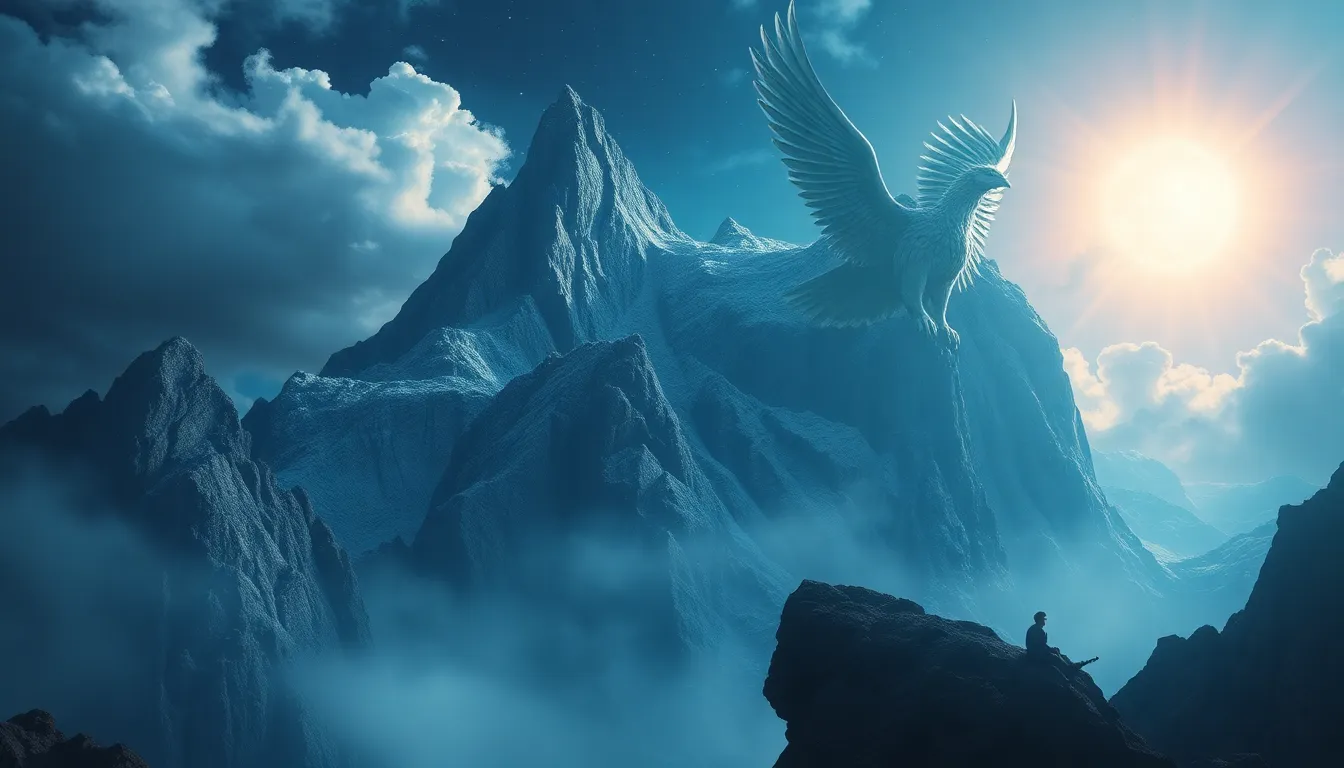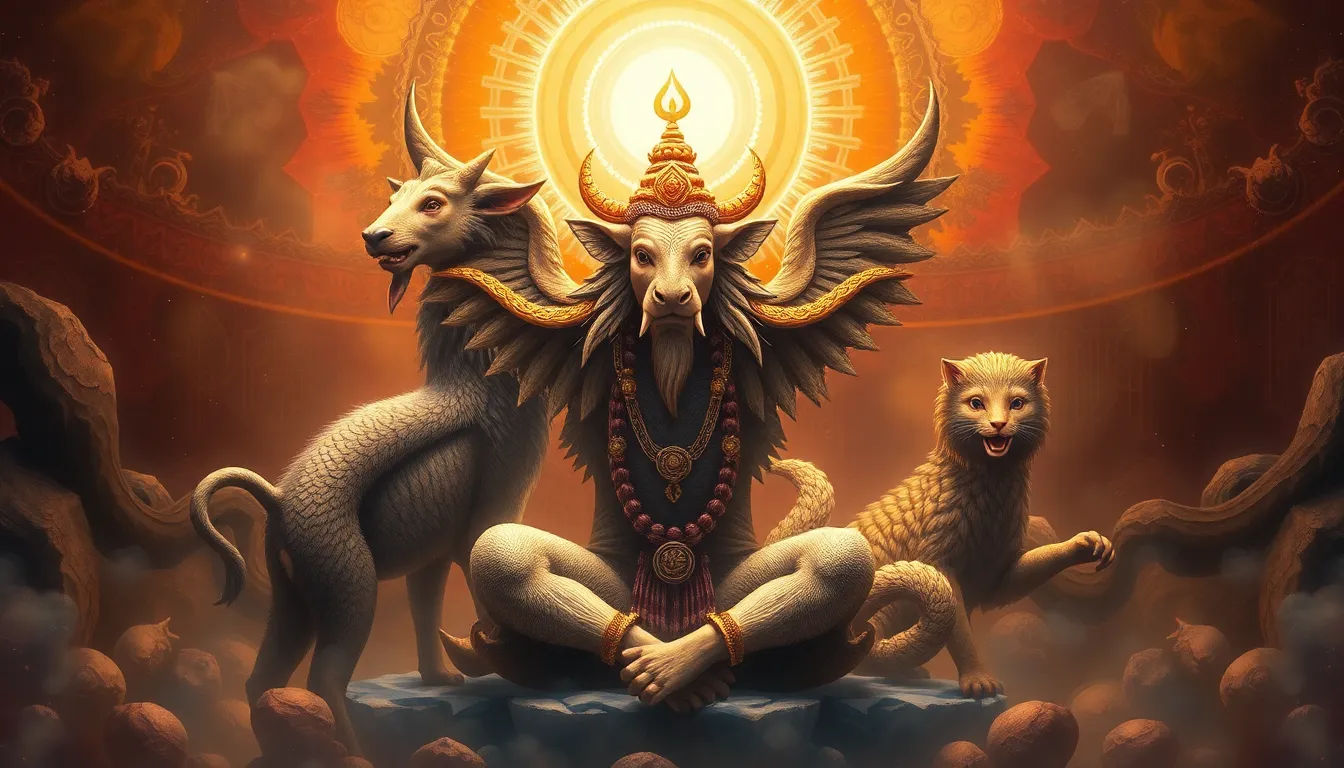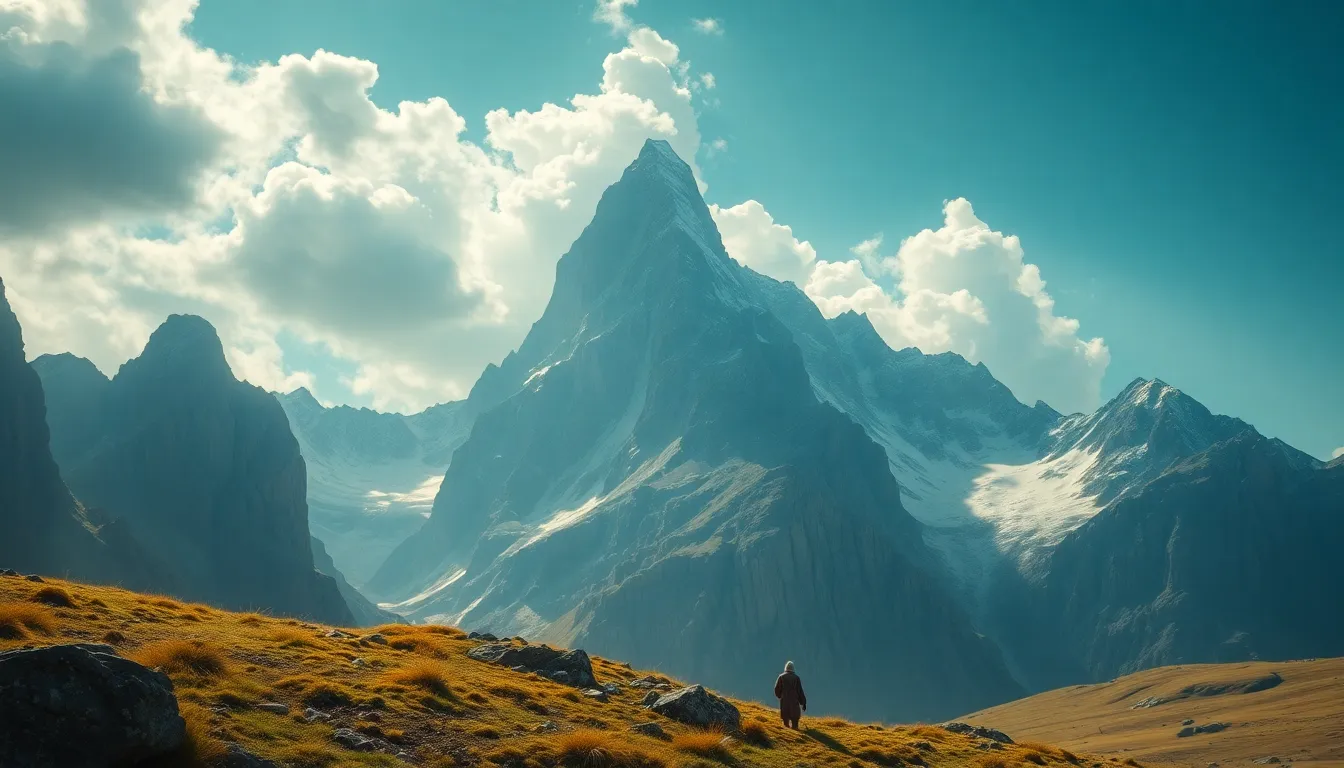The Mountain of the Celestial Guardians: Protectors of the Skies
I. Introduction
The Mountain of the Celestial Guardians is a majestic and sacred site that has captured the imaginations of many across different cultures. Towering high above the surrounding landscape, it serves not only as a geographical landmark but also as a symbol of protection and watchfulness over the skies. This mountain holds a significant place in mythology and folklore, often depicted as the home of the Celestial Guardians—powerful beings tasked with safeguarding the heavens and the earth beneath them.
The purpose of this article is to delve into the role of the Celestial Guardians in protecting the skies, exploring their historical context, geographical significance, and ongoing legacy in modern culture.
II. Historical Context
The origins of the Celestial Guardians can be traced back to ancient civilizations, where they were revered as deities or spiritual entities. Different cultures have their interpretations of these guardians, with roots in various mythologies, including but not limited to Greek, Native American, and Eastern traditions.
Over the centuries, the myth of the Celestial Guardians has evolved, influenced by changing cultural values and societal needs. In ancient texts, they were often depicted as fierce warriors battling against chaos, storms, and darkness, ensuring the safety and prosperity of the earth.
Key historical texts, such as ancient scrolls and oral traditions, provide insight into the reverence held for these guardians. Artifacts discovered in archaeological sites often depict these beings in elaborate carvings and paintings, emphasizing their importance in the spiritual and cultural lives of the people.
III. The Geography of the Mountain
The Mountain of the Celestial Guardians is characterized by its towering peaks, steep cliffs, and breathtaking vistas. Its rugged terrain is often shrouded in mist, adding to the mystical aura that surrounds it. The mountain is not only a natural wonder but also a crucial part of the ecosystem, housing diverse flora and fauna.
Unique species of plants, some believed to have medicinal properties, thrive in the mountain’s unique microclimate. Wildlife, including rare birds and mammals, can be found roaming the forests and rocky slopes.
Culturally, the mountain holds significant importance for local communities. It is often viewed as a sacred space where people can connect with nature and the divine, further embedding the guardians into the local lore.
IV. The Celestial Guardians: Who Are They?
The Celestial Guardians are often depicted in various forms, each representing different aspects of nature and the cosmos. They are characterized by their ethereal appearances, often adorned with celestial symbols and elements associated with the sky, such as stars, clouds, and lightning.
Across cultures, the Guardians take on different identities. For example:
- Greek Mythology: Associated with gods like Zeus and the Winds, who control weather and protect humanity.
- Native American Traditions: Spirits known as the Thunderbirds, believed to bring rain and control storms.
- Asian Folklore: Deities that guard the balance between heaven and earth, often depicted as dragons or celestial beings.
The symbolism associated with the Guardians often reflects themes of protection, power, and balance. They serve as reminders of the interconnectedness between humanity and the natural world.
V. The Role of the Guardians in Mythology
Throughout history, the Celestial Guardians have been central figures in numerous stories and legends. They are often depicted as fierce protectors of the earth, battling against dark forces that threaten harmony and balance.
In many myths, the Guardians are closely tied to natural elements, influencing weather patterns, storms, and the changes of seasons. Their presence is believed to affect human fate and fortune, with rituals often performed to invoke their blessings for good weather or protection from disasters.
VI. Modern Interpretations and Representations
In contemporary culture, the Celestial Guardians are portrayed in various forms of media, including literature, film, and art. Their representations often reflect a blend of traditional beliefs and modern interpretations, appealing to a wide audience.
Some influential representations include:
- Books that reimagine ancient myths for a modern audience.
- Films that depict Guardians as superheroes or mythological figures with extraordinary powers.
- Art that explores themes of nature, spirituality, and the cosmos, often incorporating the imagery of the Guardians.
Additionally, the Guardians have found a place in modern spirituality, with many people drawing inspiration from their stories and attributes to foster a deeper connection with nature.
VII. The Mountain as a Pilgrimage Site
The Mountain of the Celestial Guardians has long been recognized as a sacred site, attracting pilgrims from far and wide. Historically, it served as a place of worship where rituals and ceremonies were conducted to honor the Guardians.
Rituals performed by pilgrims often include:
- Offering prayers and offerings at designated shrines.
- Participating in seasonal celebrations that coincide with celestial events.
- Engaging in meditative practices to connect with the Guardians.
In modern times, the mountain continues to draw visitors, both for spiritual enrichment and as a tourist destination, fostering a deeper appreciation for its cultural significance.
VIII. Environmental Concerns and Conservation Efforts
The ecological significance of the Mountain of the Celestial Guardians cannot be overstated. It plays a vital role in maintaining biodiversity and serves as a crucial water source for surrounding areas.
However, the mountain faces several threats, including:
- Climate change impacting local weather patterns.
- Tourism-related activities leading to environmental degradation.
- Urbanization and industrial development encroaching on sacred lands.
Ongoing conservation efforts involve local communities, environmental organizations, and government initiatives aimed at preserving both the natural ecosystem and the cultural heritage associated with the mountain.
IX. The Future of the Mountain and Its Guardians
As society continues to evolve, the role of the Celestial Guardians may also change. Predictions for their future include a potential cultural revival, where younger generations seek to reconnect with their heritage and the teachings of the Guardians.
Conversely, there is the risk of cultural decline, as modern values may overshadow traditional beliefs. It is crucial to recognize the importance of preserving these myths and the mountain for future generations to appreciate and learn from.
X. Conclusion
In summary, the Mountain of the Celestial Guardians holds immense significance both as a natural wonder and a cultural icon. The Guardians themselves serve as protectors of the skies, embodying themes of power, protection, and balance. As we move forward, it is imperative that we engage with and protect our cultural heritage, ensuring that the legacy of the Guardians and their sacred mountain endures for generations to come.
Let us reflect on the stories, traditions, and the natural beauty that the Mountain of the Celestial Guardians represents, fostering a deeper connection with our past and a commitment to preserving our shared heritage.



